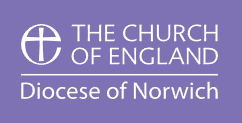Welcome to the first post for the Foundation Governor Blog.
Firstly, the Diocesan Board of Education (DBE) would like to thank you for your commitment and dedication to our schools in serving as a Foundation Governor. The Department for Education sets out three core functions of school governing boards which apply to all governors.
As Foundation Governors you have an additional responsibility to ‘uphold, support and promote the Christian ethos of the school’s foundation’. This new termly blog will focus on what that means for you as a Foundation Governor and what areas of school life you need to be particularly engaged with.
Put simply, the most important element for you to focus on is SIAMS (the Statutory Inspection of Anglican and Methodist Schools) and ensuring that your school has a robust self-evaluation process in place. This will cover all elements of a school’s Christian distinctiveness.
In order to understand the SIAMS Schedule, it is important to be aware of the rationale and context behind its formation. In 2016, the Church of England released its ‘Vision for Education; Deeply Christian, Serving the Common Good’. This is a Vision not just for Church of England schools, but a broad vision for education applicable to all. The Vision embraces spiritual, physical, intellectual, emotional, moral and social development of children and young people. A vision of human flourishing for all that embraces excellence and academic rigour as well as a wider framework.
It has identified four strands which permeate the vision
- Wisdom, knowledge and skills
- Hope and aspiration
- Community and living well together
- Dignity and respect
‘The Church of England aims to deliver excellence in education and want the best outcomes for children and young people so that they can achieve their fullest potential’ (Vision for Education, 2016.)
As a Foundation Governor, please take some time to look at the Church of England Vision for Education which can be found on the Church of England website.
Strand 1 of the SIAMS Schedule outlines that for a Good Church School ‘leaders, including governors, explain how biblical teaching roots the school’s vision giving it coherence, relevance and sustainability’.
You might like to reflect on:
- Can you explain the journey of your vision?
- Why was your biblical verse / story chosen as the foundation of your school’s vision?
- How have you established the vision of the school?
- What evidence are you gaining to assess the impact of your Christian vision in enabling both pupils and adults to flourish?
- Does your school have a two-sided summary SEF as a working document?
- How often is your vision discussed in governor meetings?
- Do you have an ethos committee where pupils and staff are invited to share how the vision has impacted them?
- How does your vision reflect the Church of England Vision?
A very useful resource bank to use when discussing the impact of the vision is Called, Connected, Committed produced by the Church of England Foundation for Educational Leadership. This provides different educational contexts to explore within a Christian framework. Section 4.6 covers ‘Sustaining Vision’.
Another useful document on sustaining vision is Ethos Enhancing Outcomes and can be ordered via Order Vision Resources – Foundation For Educational Leadership (cefel.org.uk)
The next Blog will focus on Strand 2 Knowledge, Wisdom and Skills.
